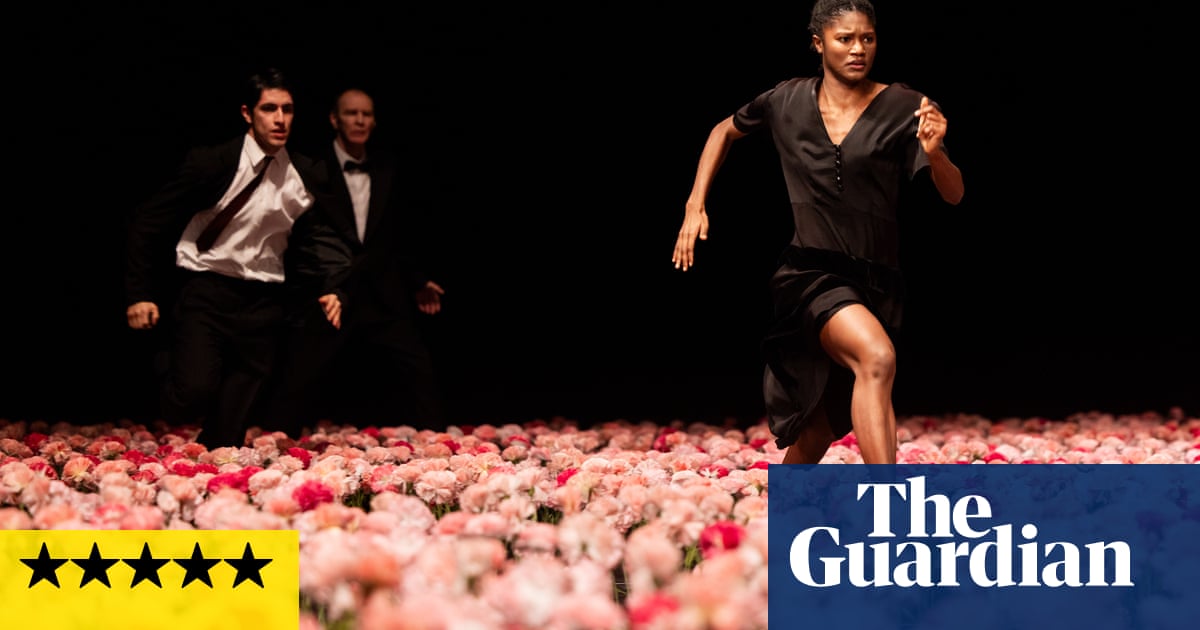
Nelken was a brave piece of programming for Valentine’s Day. The choreographer Pina Bausch famously dug into traumatic relations between the sexes, but although this 1982 work goes to some dark places, it’s festooned in flowers and ends in something like hope.
The title means carnations – 8,000 silk blooms in vivid shades of pink cover the stage, stalks piercing the floor. At first, dancers step delicately between them – we hear the deliberate clunk of sole and heel. But as things turn frenetic, voices become ragged, bodies shine with effort and flowers lie trampled and crestfallen.
Working before Germany was unified, designer Peter Pabst was also inspired by slavering guard dogs on the border between east and west. Bausch was intrigued by combining hounds and flowers: here, four Alsatians periodically bark and whimper, their tongues a disconcerting carnation-pink.
Rather than excavate romance, Nelken seals a connection between parent and child, state and subject. Bausch built richly strange stage images, which in this piece gesture at power and dependence. An overly controlling game of grandmother’s footsteps; capricious commands (“Pray! Tickle!”); men burying their faces in a heap of chopped onions or kissing the reddening cheek they have just slapped. Bausch’s women are always chic; here, the men caper in pastel cocktail frocks – to be ordered back into suit and tie is a kind of shaming.
The soundtrack ripples Schubert and Gershwin, Sophie Tucker and Billie Holiday: swoonsome music from the era of Bausch’s parents. It’s a complicated nostalgia – music that soothes but can also infantilise. Fun repeatedly turns fearful – frocked-up men scamper like bunnies, until a guard demands their passport (“Thank you. You may continue to hop”). Treated like fitful children – whether by parents or officials – people respond with furious resentment, caught in a whiplash of contradiction.
Bausch’s works demand both personality and technique, and a new generation of Tanztheater Wuppertal dancers delivers, alongside plush veteran Aida Vainieri. They perform a beguiling mime of the four seasons, teach us simple gestures that become a hug. Finally, arms arched high, they share their dance origin stories – tales of happenstance that became a sustaining life.












